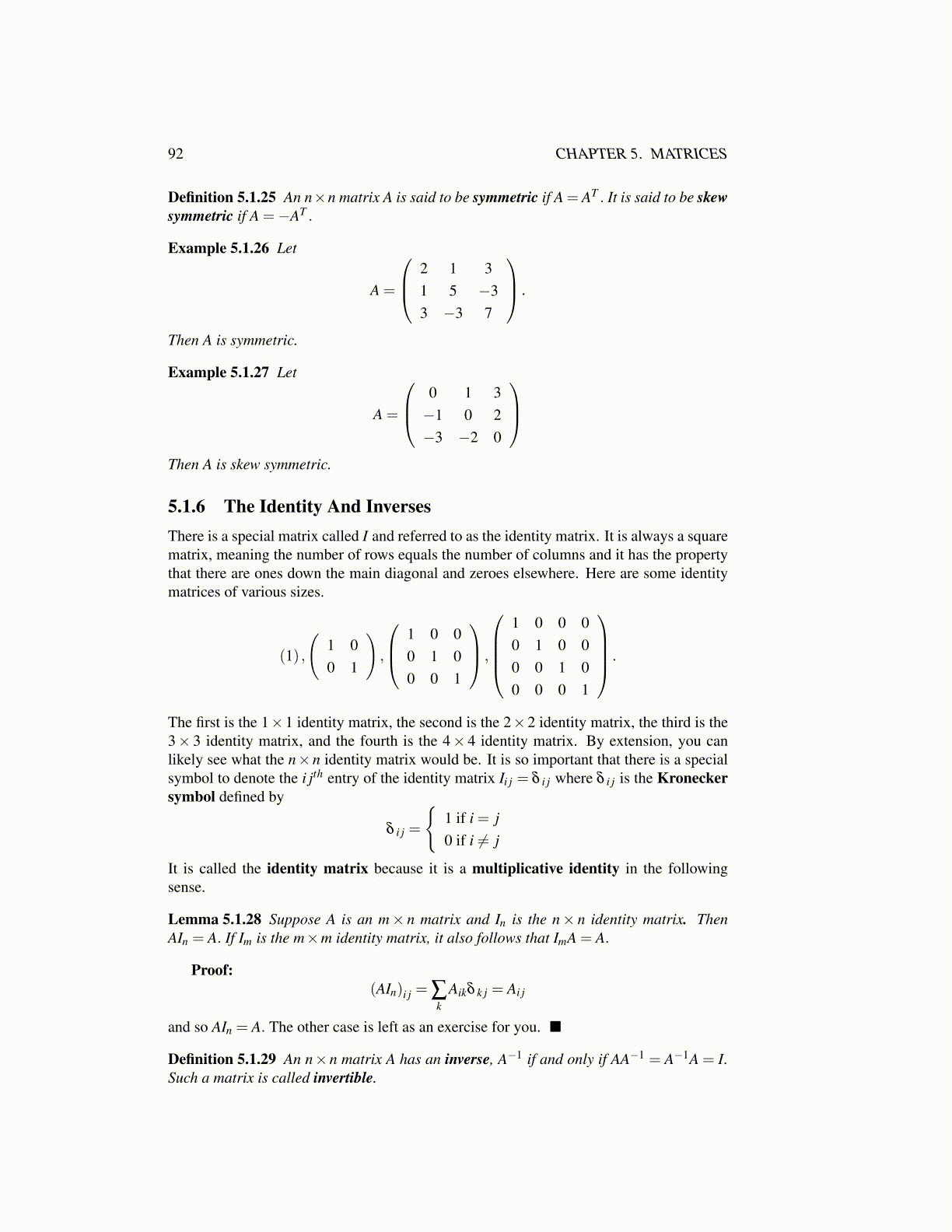
92 CHAPTER 5. MATRICES
Definition 5.1.25 An n×n matrix A is said to be symmetric if A = AT . It is said to be skewsymmetric if A =−AT .
Example 5.1.26 Let
A =
2 1 31 5 −33 −3 7
.
Then A is symmetric.
Example 5.1.27 Let
A =
0 1 3−1 0 2−3 −2 0
Then A is skew symmetric.
5.1.6 The Identity And InversesThere is a special matrix called I and referred to as the identity matrix. It is always a squarematrix, meaning the number of rows equals the number of columns and it has the propertythat there are ones down the main diagonal and zeroes elsewhere. Here are some identitymatrices of various sizes.
(1) ,
(1 00 1
),
1 0 00 1 00 0 1
,
1 0 0 00 1 0 00 0 1 00 0 0 1
.
The first is the 1×1 identity matrix, the second is the 2×2 identity matrix, the third is the3× 3 identity matrix, and the fourth is the 4× 4 identity matrix. By extension, you canlikely see what the n×n identity matrix would be. It is so important that there is a specialsymbol to denote the i jth entry of the identity matrix Ii j = δ i j where δ i j is the Kroneckersymbol defined by
δ i j =
{1 if i = j0 if i ̸= j
It is called the identity matrix because it is a multiplicative identity in the followingsense.
Lemma 5.1.28 Suppose A is an m× n matrix and In is the n× n identity matrix. ThenAIn = A. If Im is the m×m identity matrix, it also follows that ImA = A.
Proof:(AIn)i j = ∑
kAikδ k j = Ai j
and so AIn = A. The other case is left as an exercise for you. ■
Definition 5.1.29 An n×n matrix A has an inverse, A−1 if and only if AA−1 = A−1A = I.Such a matrix is called invertible.